Learn about the best apple tree companion plants to help this useful fruit tree thrive. If you are asking, “What should I plant around apple trees?”, you are in the right place. My family has grown apple trees on our small USDA Plant Hardiness Zone 8 farm for decades. Read on for a list of the best companion plants you can surround your apple trees with, including the best flowers to grow as companion plants for apple trees, the best fruit to plant with apple trees, the best herbs to plant with apple trees, and the best vegetables to plant with apple trees.
You will also get ideas about which plants to avoid planting near apple trees. Learn about the best time to plant apple trees, the best place to plant apple trees, the best fertilizer for apple trees, the watering needs of apple trees, how to propagate apple trees, and the best way to prune apple trees. There’s even a handy quick reference apple tree companion plants chart included. Let‘s get started!
Table of Contents
Why I Love Growing Apple Trees
When my husband taught high school botany, one of the most popular activities was grafting apple trees. Each student would get a newly-grafted apple tree variety to take home and plant. Consequently, we have a number of interesting heirloom apple cultivars that were grafted onto rootstock then planted in our orchard. These apple varieties are not commonly found in grocery stores and are very flavorful. My favorite is the mellow, sweet Hudson’s Golden Gem, and my husband prefers the slightly tart Melrose, pictured below.
It’s been fun over the years to make homemade apple cider with a cider press and to craft canned applesauce to give away as a holiday gift. Oatmeal apple crisp is a favorite fall dessert, and it’s nice to have a supply of apples to eat fresh. I also like to dry apples in a food dehydrator. Growing apple trees is a rewarding endeavor that can pay off in delicious crops for years. Read on for the apple tree companion planting guide.
What Makes a Good Companion Plant?
Why pay attention to companion plants? A good companion plant is one that offers various benefits to its neighboring plants, such as minimizing pest and disease issues, which helps enhance their growth, health, and overall productivity. Here are some key qualities that make a good companion plant that will help you plant strategically to make the most of your yard or garden space:
Pest Control: Companion plants may repel pests or attract beneficial insects that prey on pests, helping to reduce pest damage without the need for chemical pesticides.
Pollinator Attraction: Plants that attract pollinators such as bees, butterflies, and hummingbirds can improve pollination and fruit set in neighboring plants, leading to higher yields.
Soil Improvement: Some companion plants have deep roots that help break up compacted soil, while others fix nitrogen or add organic matter to the soil, improving soil fertility and structure for neighboring plants.
Complementary Growth Habits: Companion plants with different growth habits, such as tall plants providing shade for shorter ones or ground covers suppressing weeds, can maximize space and resources in the garden.
Disease Resistance: Certain companion plants may emit chemicals or compounds that inhibit the growth of pathogens or pests, reducing the risk of disease in neighboring plants.
Seasonal Considerations: Companion plants that thrive during different seasons can provide continuous benefits throughout the year, such as early bloomers attracting pollinators or cover crops protecting soil during the off-season.
Aesthetic Value: Companion plants with attractive foliage, flowers, or fruits can enhance the visual appeal of the garden while providing practical benefits to neighboring plants.
Apple Tree Companion Plants: Flowers
Companion plants for apple trees can enhance their growth, improve soil health, and deter pests. Here are some effective companion flowers you could try planting around the base of an apple tree:
Clover: Clover fixes nitrogen in the soil, improving soil fertility for apple trees. We have quite a bit of clover mixed in with the field grass in our orchard.
Lavender: Lavender repels pests such as moths and attracts pollinators.
Marigolds: Marigolds repel pests like aphids, nematodes, and beetles.
Nasturtiums: Nasturtiums attract beneficial insects and repel pests like aphids and whiteflies.
Note: We have chickens that currently roam around our orchard during the day, so I don’t have any companion flowers growing around the bases of the trees at the moment. If you have a chicken-free place to plant your apple trees, companion flowers would be a lovely addition to any orchard or garden space.
Apple Tree Companion Plants: Fruit
The best fruit companions for apple trees can help enhance growth, improve pollination, and manage pests. Here are some top choices:
Pears: Pears have similar growing conditions to apples and can share pollinators, boosting fruit set. We had pears and apple trees growing alongside each other in our orchard until the pear trees became too large. We chose to keep the apple trees, but I miss the pears.
Plums: Plums attract pollinators and can help improve apple tree pollination. They also have similar soil and sunlight requirements.
Cherries: Cherries can provide cross-pollination benefits and attract beneficial insects that help with apple tree health.
Peaches: Peaches share similar care needs and can help create a diverse orchard ecosystem.
Apricots: Apricots can also help with pollination and have similar environmental requirements as apples.
Apple Tree Companion Plants: Herbs
Companion herbs for apple trees can improve soil health, deter pests, and attract beneficial insects. Here are some of the best options:
Chives: Repels aphids and other pests, and can help improve apple tree health.
Garlic: Deters aphids, spider mites, and other pests, and has antifungal properties.
Basil: Repels aphids and attracts pollinators and beneficial insects.
Mint: Repels pests like aphids, ants, and spiders. Note that mint can be invasive, so consider planting it in containers.
Dill: Attracts beneficial insects like ladybugs and parasitic wasps that prey on pests.
Apple Tree Companion Plants: Vegetables
Companion vegetables for apple trees can support growth, improve soil health, and help manage pests. Here are some effective options:
Carrots: Carrots have deep roots that help aerate the soil, benefiting apple tree roots. They also don’t compete with apple trees for nutrients.
Beets: Beets grow well with apple trees due to different root depths and nutrient needs, minimizing competition.
Lettuce: Lettuce grows well in the shade of apple trees and helps reduce weed competition.
Radishes: Radishes grow quickly and can help loosen the soil around apple trees, improving aeration and nutrient access.
Spinach: Spinach can grow well in the shade of apple trees and helps cover the soil to reduce weeds.
What Not to Plant Near Apple Trees
When planting apple trees, avoid planting the following:
Walnuts: Walnuts produce juglone, a toxic compound that can inhibit the growth of apple trees and other plants.
Corn: Corn can compete with apple trees for nutrients and water and may attract pests that also affect apple trees.
Potatoes: Potatoes can be susceptible to diseases that may spread to apple trees, and they also compete for nutrients.
Tomatoes: Tomatoes are prone to similar diseases and pests as apples, which can spread and harm both.
Cucumbers: Cucumbers can compete for water and nutrients and may also attract pests that could affect apple trees.
Peppers: Peppers and apple trees may have competing nutrient needs and can attract similar pests.
Apple Tree Companion Planting Chart
| Apple Tree Companion Plants | |
| Apple Tree Companion Plants: Flowers | Apple Tree Companion Plants: Fruit |
| Clover | Apricots |
| Lavender | Cherries |
| Marigolds | Peaches |
| Nasturtiums | Pears |
| Plums | |
| Apple Tree Companion Plants: Herbs | Apple Tree Companion Plants: Vegetables |
| Basil | Beets |
| Chives | Carrots |
| Dill | Lettuce |
| Garlic | Radishes |
| Mint (if grown in a container) | Spinach |
| Worst Apple Tree Companion Plants | |
| Corn | |
| Cucumbers | |
| Peppers | |
| Potatoes | |
| Tomatoes | |
| Walnuts | |
Apple Tree Planting and Growing Tips
When to Plant Apple Trees
Plant apple trees in early spring or late fall for the best results:
Early Spring: Plant apple trees as soon as the soil can be worked, typically 2-4 weeks before the last expected frost. This allows the tree to establish roots before the heat of summer. We usually plant our apple trees in the spring, because that is when they were grafted.
Late Fall: Plant apple trees 4-6 weeks before the ground freezes, allowing them to establish roots before winter. This provides the tree with a head start in spring as it will begin growing as soon as conditions warm up.
Where is the Best Place to Plant Apple Trees?
Plant apple trees in a location that provides the following conditions for optimal growth:
Sunlight: Full sun, ideally 6-8 hours of direct sunlight per day. This helps ensure good fruit production and tree health.
Soil: Well-drained soil is crucial. Avoid heavy, clayey soils that retain too much water. Apple trees prefer slightly acidic to neutral (pH 6.0 to 7.0) soil. Test and amend soil as needed.
Spacing: Space apple trees about 15-20 feet apart to allow for full canopy growth and air circulation. Dwarf or semi-dwarf varieties can be planted closer together, around 8-12 feet apart.
Protection: Choose a location that is sheltered from strong winds, which can damage blossoms and fruit.
Drainage: Plant apple trees away from low-lying areas where water tends to pool, as poor drainage can lead to root rot.
What is the Best Fertilizer for Apple Trees?
The best fertilizer for apple trees provides balanced nutrients. Here are some options:
Balanced Fertilizer: Use a general-purpose fertilizer like 10-10-10 or 14-14-14 to provide equal parts nitrogen (N), phosphorus (P), and potassium (K).
Fruit Tree Fertilizer: Specialized fruit tree fertilizers often have higher phosphorus and potassium ratios, such as 5-10-10, to support flowering and fruit development.
Organic Options: Consider compost, well-rotted manure, or organic fertilizers like bone meal and fish emulsion to improve soil fertility and promote healthy growth.
How Much Water Do Apple Trees Need?
Apple trees need consistent moisture to thrive. Here’s a brief guide:
Watering Guidelines: Water apple trees deeply once a week, especially during dry periods. Young trees may need more frequent watering. Provide about 1 inch of water per week, including rainfall. Adjust based on soil type and weather conditions. Ensure the soil is moist but not waterlogged. Water when the top 1-2 inches of soil feel dry. Provide good drainage to prevent water from pooling around the roots.
What are Common Apple Tree Pests and Diseases?
Unfortunately, apple trees are susceptible to a variety of pests and diseases. The trunks of our apple trees are painted white, as pictured below. That is to combat the apple tree borer, a beetle whose larvae tunnels into tree trunks, potentially causing structural damage. The latex paint makes the trunks unappealing.
Here are some other common issues apple trees might have:
Pests
Apple Maggot: Larvae burrow into the fruit, causing internal damage.
Codling Moth: Larvae tunnel into the core of the fruit, leading to rotting and premature fruit drop.
Aphids: These small insects suck sap from the leaves and stems, causing distorted growth and honeydew secretion.
Spider Mites: Tiny pests that feed on the underside of leaves, causing stippling, yellowing, and premature leaf drop.
San Jose Scale: Small, circular insects that suck sap from branches and fruit, leading to reduced vigor and potentially death of the tree.
Apple Sawfly: Larvae damage fruit by burrowing just beneath the skin, causing characteristic “ribbon” scars.
Diseases
Apple Scab: Fungal disease causing dark, scabby lesions on leaves, fruit, and twigs.
Fire Blight: Bacterial disease that causes blossoms, shoots, and branches to wilt and turn black.
Powdery Mildew: Fungal disease characterized by white, powdery growth on leaves, buds, and young fruit.
Cedar Apple Rust: Fungal disease causing bright orange, rust-colored spots on leaves and fruit.
Brown Rot: Fungal disease causing fruit to rot and can also infect blossoms and shoots.
Black Rot: Fungal disease causing leaf spots, fruit rot, and limb cankers.
Proper management practices, including regular monitoring, proper pruning, and the use of resistant varieties, can help mitigate these issues. Our chickens are fabulous insect consumers!
Pruning Apple Trees
Pruning helps improve tree health, fruit quality, and overall structure. Here’s a basic guide to pruning apple trees effectively and efficiently:
Timing: Prune in late winter or early spring before new growth begins.
Remove Dead/Diseased Wood: Cut out any dead, damaged, or diseased branches.
Thin Out: Remove crowded or crossing branches to improve air circulation and sunlight penetration.
Shape the Tree: Maintain a central leader (main trunk) and prune back lateral branches to encourage a balanced shape.
Shorten New Growth: Trim back vigorous new growth to maintain size and shape, promoting better fruit production
Best Tools for Pruning Apple Trees
Each of the tools listed below serves a specific purpose and having the right tool for each pruning task will make the pruning process more efficient and effective.
Hand Pruners (Secateurs): Ideal for cutting small branches and twigs up to about 1/2 inch in diameter. Bypass pruners are generally preferred over anvil pruners as they make cleaner cuts. My favorites are made by Felco.
Loppers: These have longer handles than hand pruners, providing greater leverage for cutting branches up to 2 inches in diameter. They are useful for reaching higher branches and for cutting thicker limbs.
Pruning Saw: Necessary for cutting larger branches that are too thick for loppers. A pruning saw has a narrow, curved blade that can easily cut through branches without damaging the tree.
Pole Pruner: Useful for reaching high branches without the need for a ladder. It typically combines a pruner and a saw on an extendable pole.
Pruning Shears: Similar to hand pruners but often larger and more robust, suitable for heavier-duty pruning. My favorites are made by Felco.
Additional Tools
Sharpening Stone: Essential for keeping your cutting tools sharp, ensuring clean cuts that promote quick healing.
Safety Gear: Gloves, safety glasses, and sturdy footwear to protect yourself while pruning. I like to wear these short gardening boots that are easy to slip on and off.
Propagating Apple Trees
Propagating apple trees can be done through several methods, but grafting is the one our family has the most experience with. Here are the best methods for propagating apple trees with the grafting method:
Whip and Tongue Grafting:
Best Time: Late winter to early spring, before bud break.
Procedure:
- Select a healthy scion (a young shoot or twig) from the desired apple variety.
- Make matching diagonal cuts on both the scion and the rootstock (the base tree).
- Create a small tongue in both cuts to lock them together.
- Fit the scion and rootstock together, ensuring cambium layers align.
- Secure with grafting tape or a rubber band and cover with grafting wax to prevent desiccation.
Cleft Grafting:
Best Time: Early spring, before bud break.
Procedure:
- Make a vertical split in the rootstock.
- Prepare the scion by making two diagonal cuts to form a wedge.
- Insert the scion wedge into the rootstock split, ensuring cambium contact.
- Secure with grafting tape and seal with grafting wax.
Popular Apple Varieties
Heirloom apples are old apple varieties that have been passed down through generations for their unique flavors and characteristics. These heirloom varieties (Pink Pearl is pictured above) are cherished for their unique tastes and historical significance, often offering flavors and textures that are different from modern commercial apple varieties. We have, at one time or another, grown most of these in our orchard:
Gravenstein: Originating from Denmark, it’s known for its crisp texture and tart, aromatic flavor, ideal for both eating fresh and cooking.
Cox’s Orange Pippin: A British variety, prized for its complex, rich flavor and aromatic scent, often considered one of the best-tasting apples.
Ashmead’s Kernel: An English apple with a russeted skin and a sweet, tart flavor, often used for cider making.
Esopus Spitzenburg: Believed to be one of Thomas Jefferson’s favorite apples, it’s known for its rich, spicy flavor and crisp texture.
Roxbury Russet: America’s oldest apple variety, originating in Massachusetts, it’s valued for its sweet-tart flavor and russeted skin.
Northern Spy: Known for its excellent balance of sweetness and tartness, it’s popular for baking and fresh eating.
Arkansas Black: An American variety with dark, almost black skin, known for its hard texture and sweet-tart flavor, improving in storage.
Hudson’s Golden Gem (My favorite!): A russet apple from Oregon with a sweet, nutty flavor and a distinctive golden skin.
Calville Blanc d’Hiver: A French heirloom known for its excellent cooking qualities, particularly in tarts and pies, with a tart, rich flavor.
Baldwin: Once the most popular apple in New England, it has a spicy, aromatic flavor and is great for both fresh eating and cooking.
Melrose: A somewhat tart apple originally from Ohio that is a cross between Jonathan and Red Delicious varieties. We like to use it in our homemade applesauce.
Pink Pearl: A pink-fleshed apple with creamy, translucent skin that originated in northern California. It is fun to use when you want a touch of pink in an apple dish.
Storing Apples
Here’s a guide to storing apples to make the most of your harvest. By following these steps, you can extend the freshness and quality of your apples through the storage period:
Select and Prepare: Only store apples that are undamaged and free from bruises or blemishes. Handle apples gently to avoid bruising.
Storage Conditions: Store apples in a cool, dark place. The ideal temperature is 30-35°F (-1 to 1°C). Maintain high humidity, around 90-95%, to prevent shriveling.
Packaging: Use perforated plastic bags or ventilated storage bins to allow air circulation. Store apples separately from other fruits and vegetables to prevent the spread of ethylene gas, which can accelerate ripening.
Regular Inspection: Inspect stored apples regularly and remove any that show signs of spoilage to prevent them from affecting others.
Apple Tree Resources
Check in your area to see if there is a Home Orchard Society or a Home Orchard Education Center. Members often offer workshops and classes for aspiring fruit tree growers. They could also connect you with a good source of rootstock or heirloom apple trees in your area.
One book we have had in our collection for years is a book called Apples for the 21st Century that offers details about various apple cultivars. If you are interested in narrowing down your apple tree choices to some truly outstanding varieties, this book would be very helpful.
Need More Planting Ideas?
Check out the tips for the best companion plants for eggplant to learn what to grow with those beauties. If you like the idea of companion planting, you might be interested in reading about the best companion plants for pumpkins, sunflowers, garlic, asparagus, rosemary, radishes, dill, beetroot (beets), thyme, parsley, lupine, stevia, peonies, or the best companion plants for lavender. Get tips for growing stunning dahlias. Are you a beginning gardener? Try planting some foolproof, easy-care perennials, or learning about the best companion plants for columbine. There are so many exciting plants to grow!
Keep Track of Your Garden with a Journal Logbook
Now that you have learned about some compatible companion plants, keep track of your planting ideas, goals, and plans with a printable, editable free garden journal logbook. Choose the pages you want to use and customize them as you wish to record monthly, weekly, and daily garden tasks, lists, weather, and planting arrangements. There are also grid pages for easily designing the layout of your vegetable garden, flower garden, or landscape. Print it out and put it into a notebook you can take with you to the garden (that’s what I do). It’s nice to have all of your garden information in one place.
Get the garden journal logbook!
Free Online Garden Planner Layout Template
Now that you know which are the best companion plants for apple trees, you might need a way to plan your garden layout. Whether you are planting vegetables, flowers, or herbs near your lupine plants, this online garden planner can help you visualize your design and bring it to life. Arrange and rearrange the plants over and over, then print the layout when you are satisfied. With garden tasks that need your attention, this is one way to save time.
It’s fully customizable when you make your own copy and includes two editable chart pages for noting planting specifications.
Get my free online garden layout planner template!
Have a wonderful week, and may all of your apple tree-growing endeavors meet with success!

Lisa Mitchell is a wife, mom, and school librarian who likes to grow fruit, herbs, vegetables, and flowers on her family’s small Pacific Northwest farm. To learn more about what this website has to offer gardeners, click on over to the Garden page.

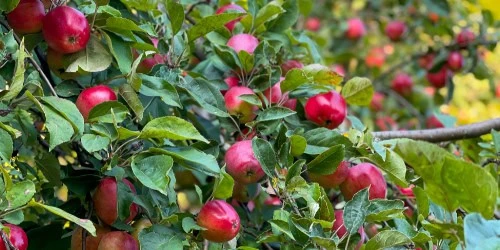



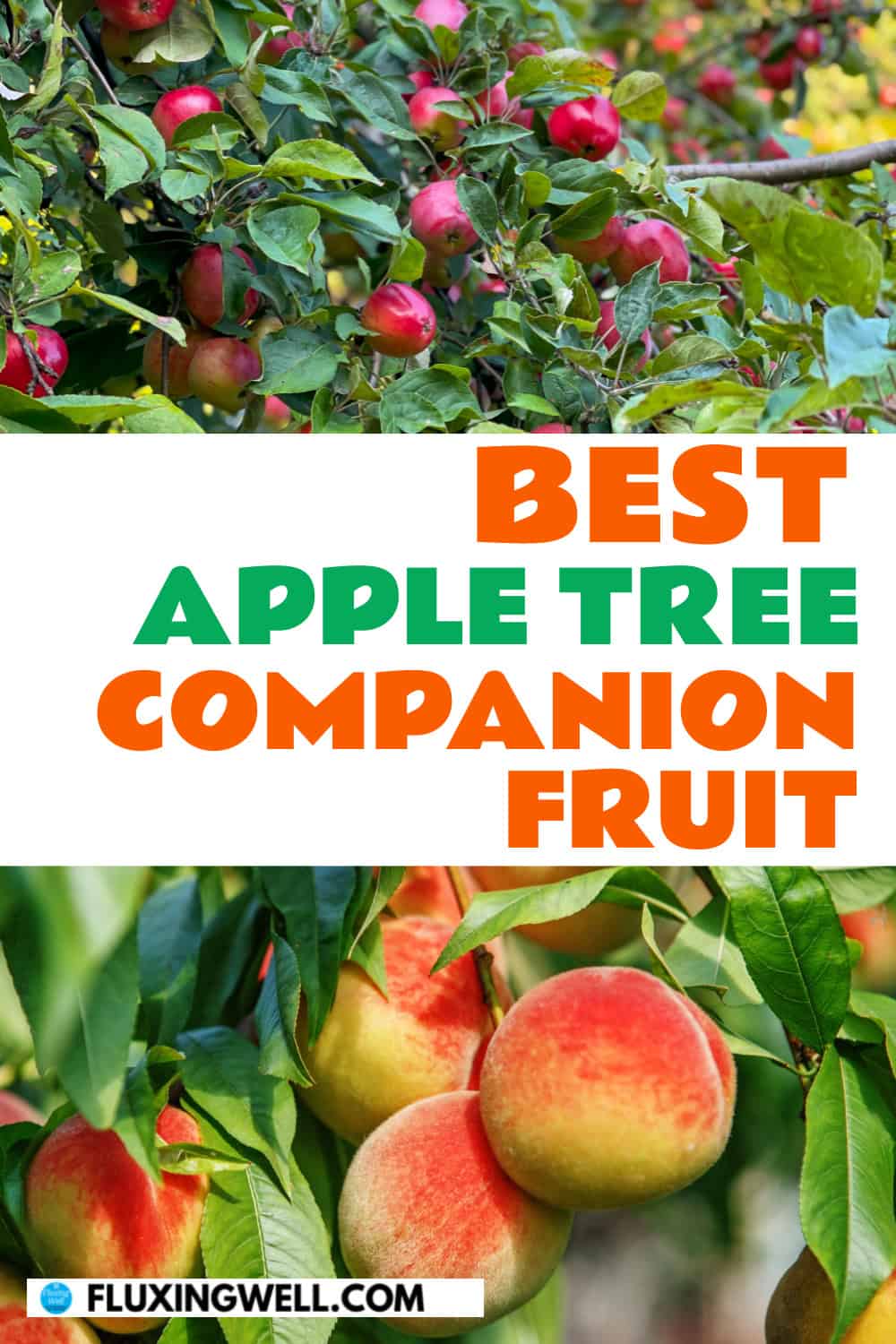
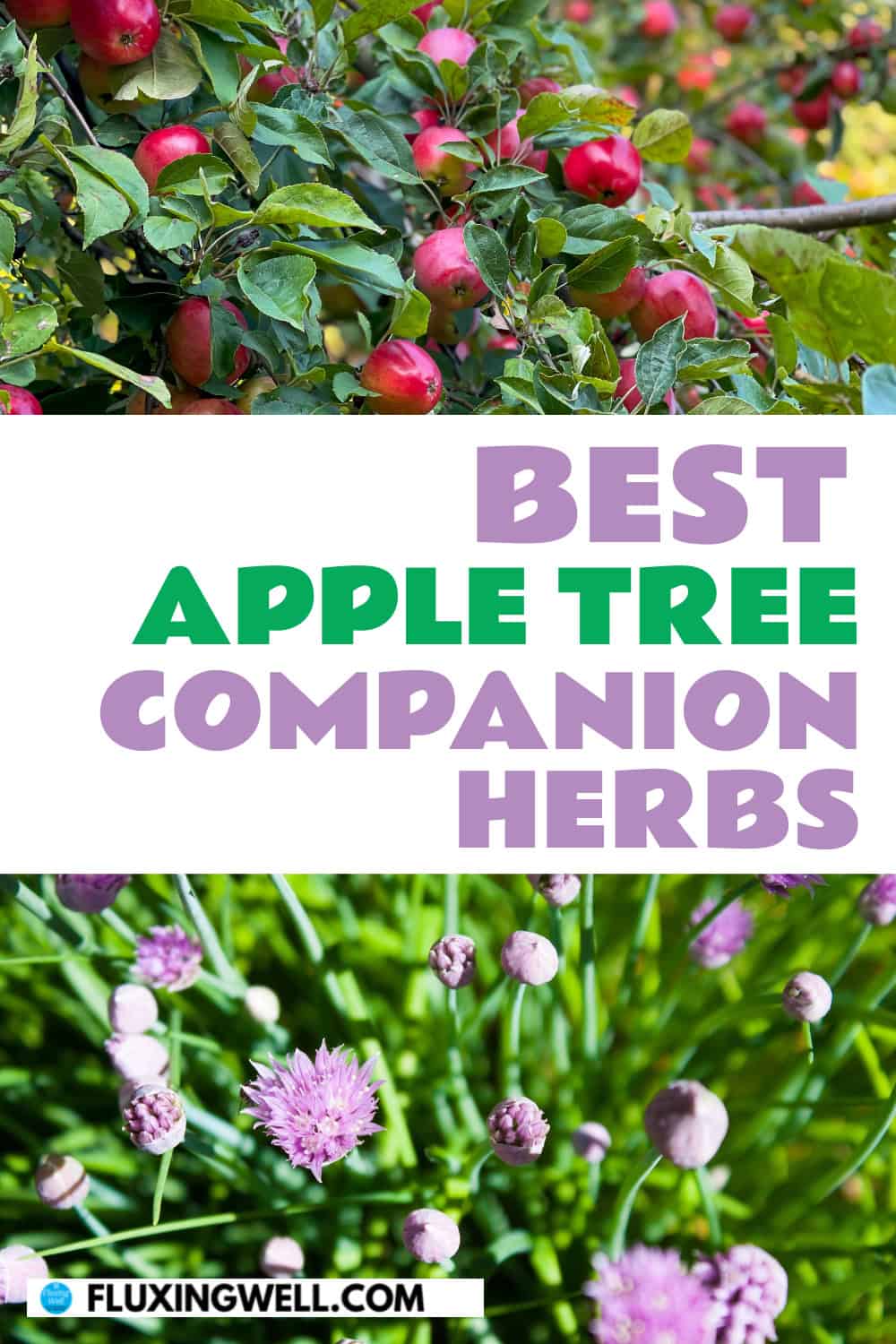
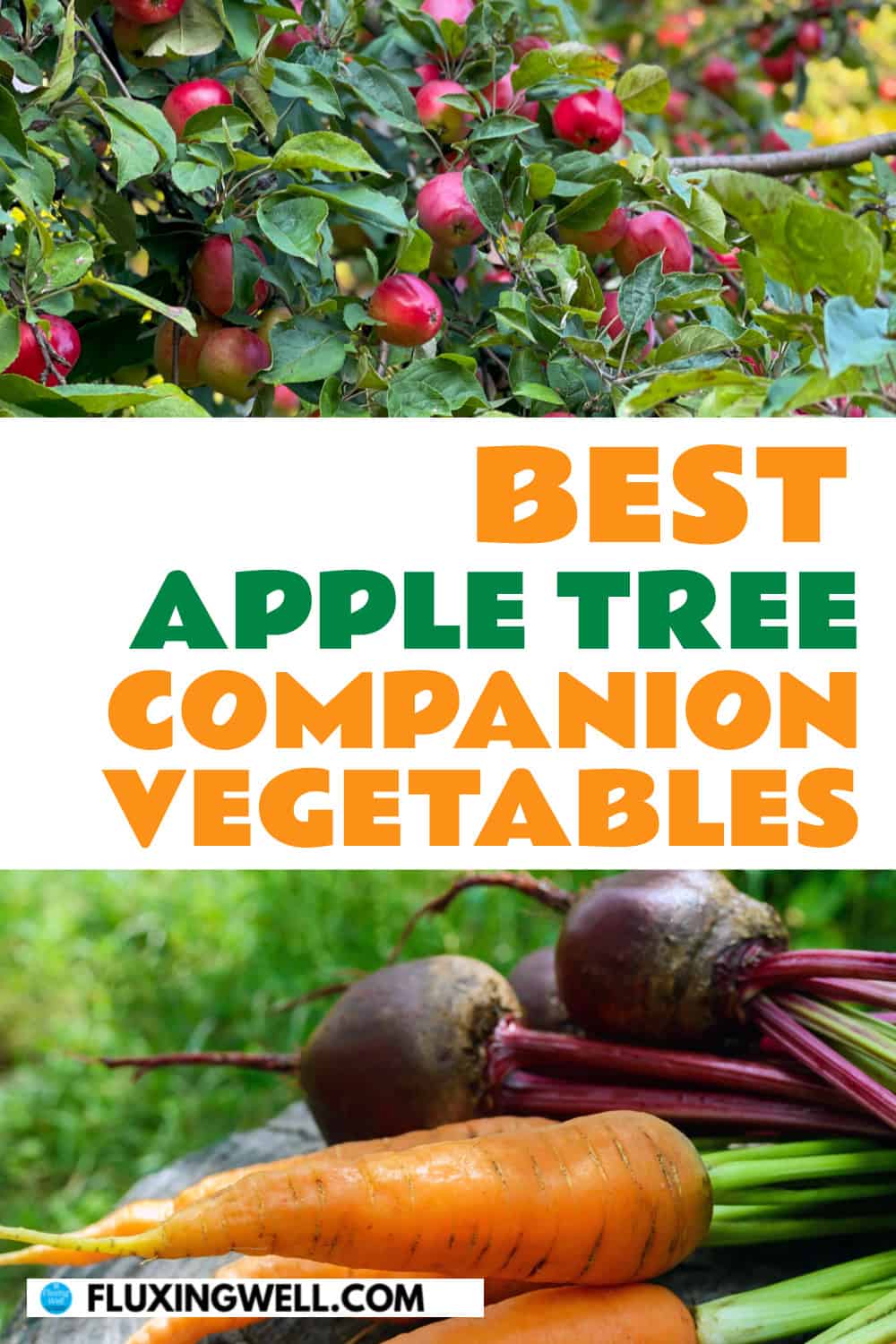
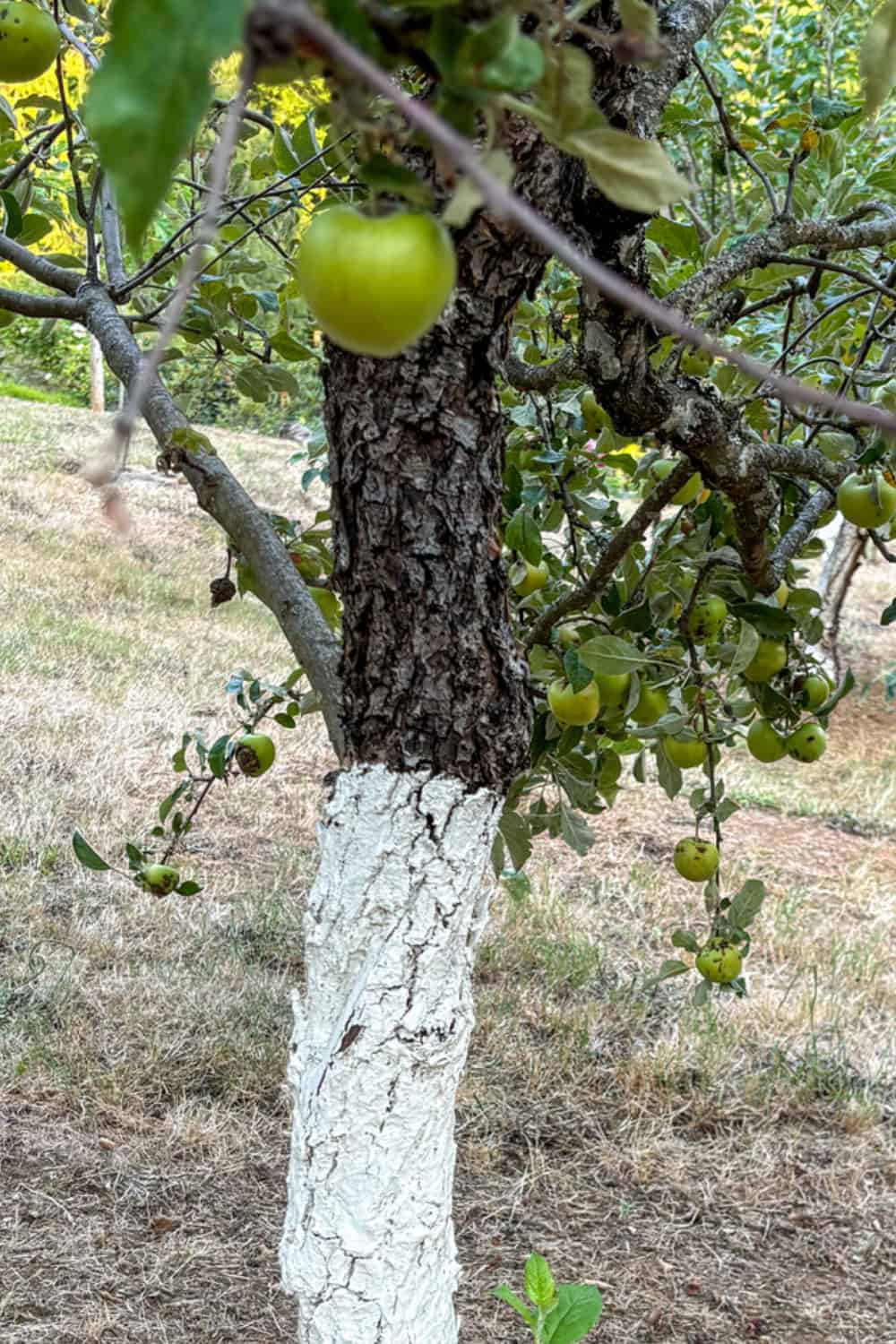


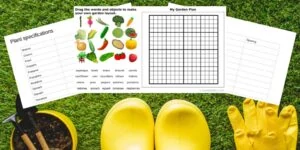
This list of best apple tree companion plants will be very helpful for seasoned gardeners in my opinion. I am hearing for the first time that pears and apples have a similar growing condition.
I’m so glad you learned something new about pears and apples being good companions. Thanks for letting me know.
This is a wonderful resource on apple tree companion plants! Thanks for including pruning tips.
You are most welcome. Apple trees are a great crop to grow.
Thanks for this helpful and informative article about apple tree companion plants and which to avoid. An excellent resources as always!
You are most welcome! I’m happy to share and get others interested in growing apple trees with good companion plants.
This guide is incredibly helpful for anyone looking to optimize their apple tree’s growth! The list of apple tree companion plants is detailed and practical, and the tips on which plants to avoid are a game-changer.
Thank you so much! I’m glad you found the guide to apple tree companion plants helpful.